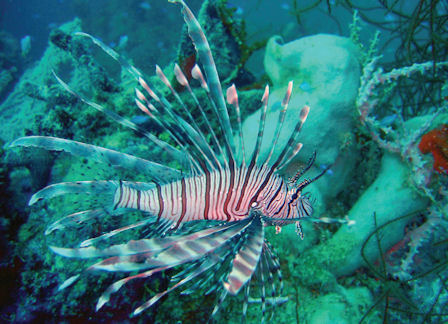If you like local seafood, then you like sea grass. Also called submerged aquatic vegetation or SAV, sea grass provides habitat, at some point, to many of the finfish and shellfish species people like to eat in North Carolina.
“The success of our biggest fisheries, including the shrimp, scallop and blue crab fisheries, are dependent on healthy SAV habitats. Game fish like red drum and anadromous fish like river herring are also among the 150 fish and shellfish species that count on these aquatic grasses for food and protection,” says Jim Hawhee, previously with the Albemarle-Pamlico National Estuary Partnership, or APNEP.

SAV also serves as a food source for migrating waterfowl that hunters and birders spend millions of dollars each year in North Carolina to pursue.
APNEP works with partners, including N.C. Wildlife Resources Commission, N.C. Division of Marine Fisheries, University of North Carolina Institute for the Environment and North Carolina Sea Grant, to promote the conservation and raise awareness of SAV along coastal North Carolina and southeastern Virginia. Soon, the group will place signs at boat ramps around the state.
The project, funded by an N.C. Coastal Recreational Fishing License grant, seeks to alert boaters about the importance of SAV and how to protect it.
“A little boating knowledge goes a long way to protect SAV. Simple things like avoiding SAV while anchoring and washing off your boat at the end of the day help maintain the integrity of the local estuarine ecosystem,” Hawhee says.
Sea Grant participated in the awareness campaign by spearheading the creation and dissemination of an SAV fact sheet, part of the Sustainability Series.
“People don’t realize the importance of SAV primarily because they can’t see it,” says Sea Grant coastal resources and community specialist, Gloria Putnam. “We wanted to provide something that promotes understanding about what it is, its benefits, and how it can be protected.”
The four-page fact sheet was shared with state and federal agencies and nongovernmental groups that are involved in public outreach.
Go here to download a copy of this document.
Go here to learn more about the Sustainability Series, visit Sea Grant’s “Clean Water, Healthy Communities” page. LINKS COMING SOON.
This article was published in the Autumn 2013 issue of Coastwatch.
For contact information and reprint requests, visit ncseagrant.ncsu.edu/coastwatch/contact/.



